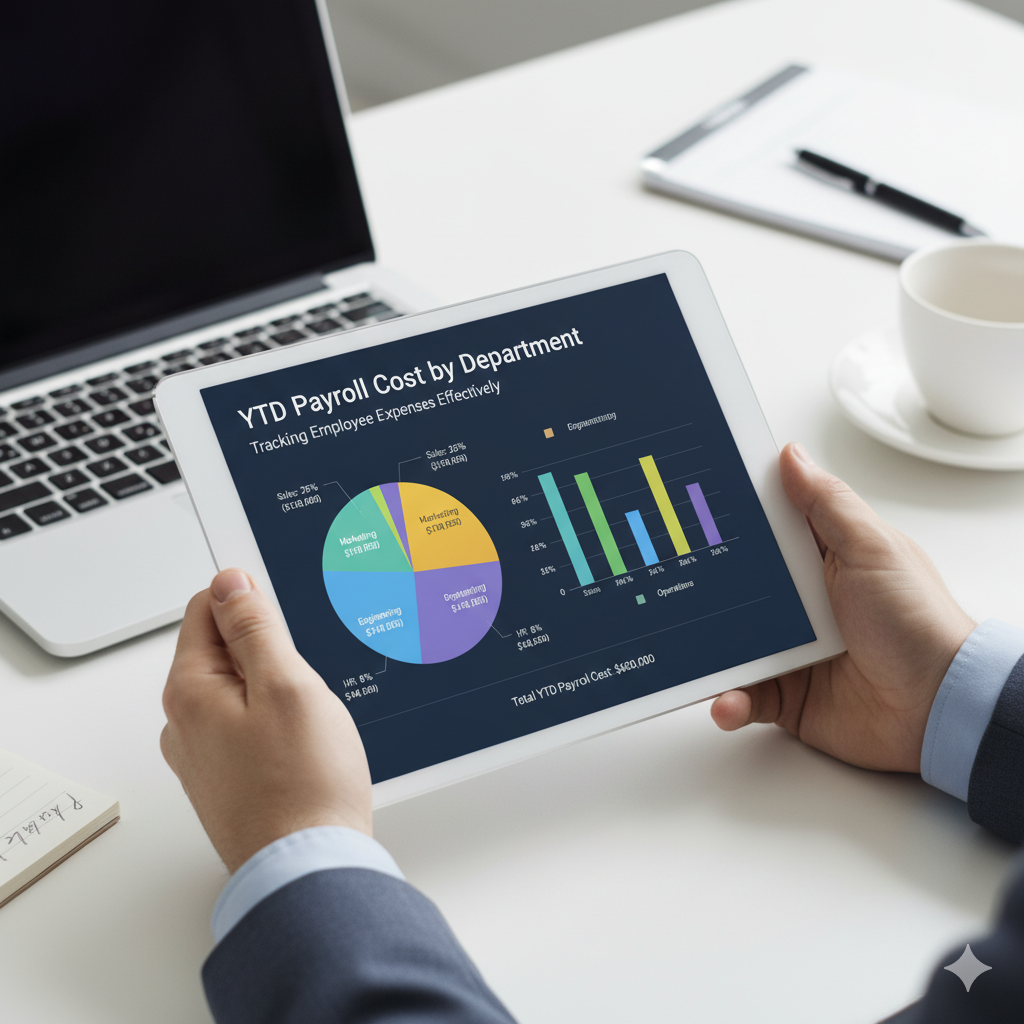For most businesses, payroll is the largest expense. But it’s not enough to just know the total payroll cost—you need to understand where those costs are coming from. That’s where the Year-To-Date (YTD) Payroll Cost by Department report becomes invaluable.
This breakdown helps employers and finance teams see how much each department is spending on salaries, benefits, and taxes. By analyzing payroll costs by department, businesses can track expenses, allocate budgets more effectively, and make smarter staffing decisions.
In this guide, we’ll explain what YTD Payroll Cost by Department means, why it’s important, and how to use it to improve financial management and workforce planning.
What Is YTD Payroll Cost by Department?
The YTD Payroll Cost by Department report shows the cumulative amount a company has spent on payroll since the beginning of the year, categorized by department (e.g., Sales, Marketing, Operations, HR, IT).
It typically includes:
- Gross Wages – Salaries, overtime, and bonuses
- Employer Payroll Taxes – Social security, Medicare, or equivalent contributions
- Employee Benefits – Health insurance, retirement contributions, allowances
- Other Compensation Costs – Incentives, commissions, or departmental stipends
By reviewing payroll costs per department, management gains visibility into how labor expenses impact overall profitability.
Why Tracking Payroll Cost by Department Matters
Budget Control
Understanding payroll costs per department helps finance teams ensure that spending aligns with budget forecasts.
Workforce Planning
If one department consistently incurs higher payroll expenses, leadership can decide whether to hire, restructure, or outsource tasks.
Performance Evaluation
Comparing payroll costs to departmental revenue or output helps measure ROI on labor investment.
Compliance and Reporting
Payroll records are crucial for audits, tax compliance, and financial transparency. Department-level breakdowns add accountability.
How to Calculate YTD Payroll Cost by Department
Collect Payroll Data
Gather employee salaries, wages, and deductions from payroll software.
Categorize by Department
Assign employees to their respective departments (HR, Sales, IT, etc.).
Include Employer Costs
Add statutory contributions, benefits, and allowances—not just base salaries.
Summarize Year-to-Date Totals
Create cumulative totals from January 1 through the latest payroll period.
Best Practices for Managing Payroll Costs by Department
- Use Payroll Software – Automate calculations to avoid errors and save time.
- Review Reports Regularly – Monitor YTD costs every month or quarter.
- Compare Costs vs. Revenue – Check if payroll spending matches departmental performance.
- Plan for Seasonal Fluctuations – Anticipate higher payroll during peak hiring months.
- Align Payroll with Business Strategy – Ensure staffing levels support growth without overspending.
Conclusion
The YTD Payroll Cost by Department report is more than a financial record—it’s a powerful decision-making tool. By breaking down payroll costs department by department, businesses can:
- Track employee expenses effectively
- Control budgets
- Improve workforce planning
- Strengthen financial transparency
For HR managers, accountants, and business owners, this analysis ensures payroll is not just an expense, but a strategic investment in the company’s future.

